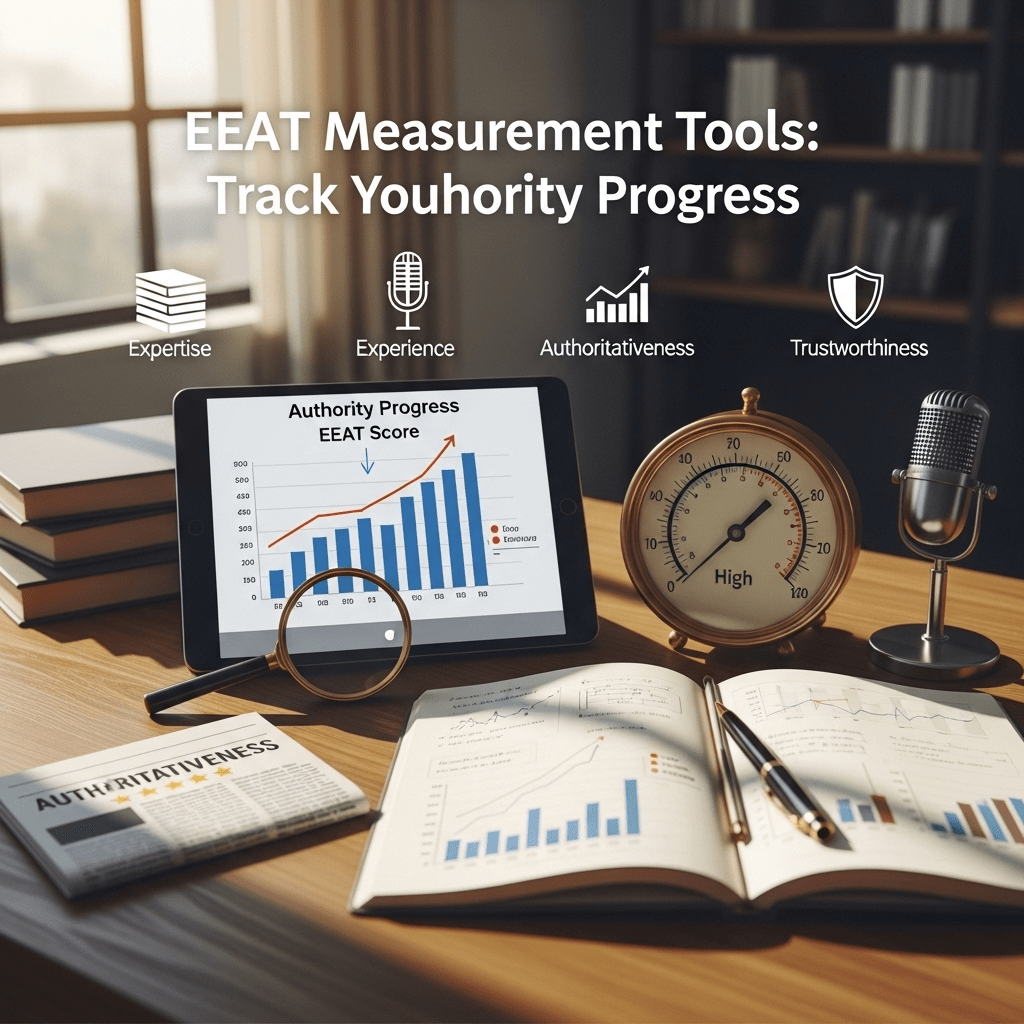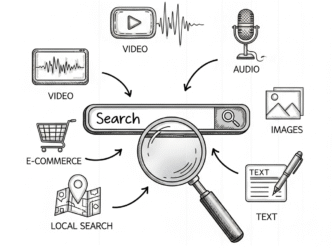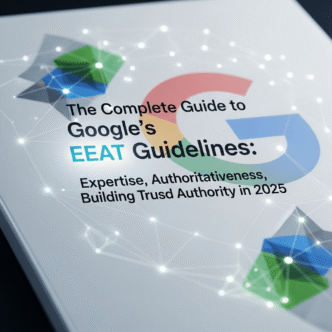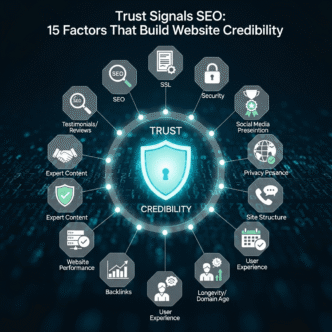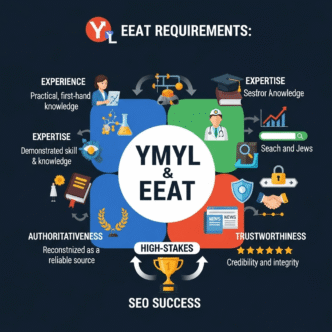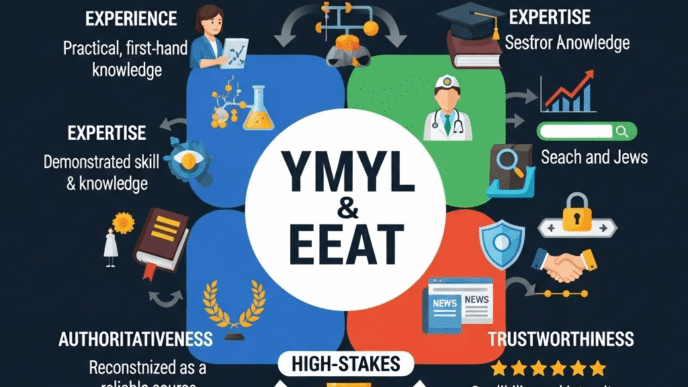Ever feel like you’re throwing SEO spaghetti at the wall and hoping something sticks? You’re not alone! Building authority online can feel like trying to measure air with a ruler – frustratingly intangible. But here’s the thing: EEAT measurement tools are your secret weapon to finally track what actually matters to Google.
Gone are the days of guessing whether your expertise is shining through or if your content is building the trust Google craves. Today, we’re diving into the world of authority tracking and credibility measurement that’ll transform your SEO game from wishful thinking to data-driven success.
Table of Contents
Toggle
What Exactly Are EEAT Measurement Tools?
Think of EEAT measurement tools as your website’s report card – but way more useful than that C+ you got in math class.
These aren’t just fancy analytics dashboards that make you feel important. They’re specialized platforms designed to track the four pillars that Google obsesses over: Experience, Expertise, Authoritativeness, and Trustworthiness.
Authority tracking tools work behind the scenes, analyzing everything from your backlink profile to how users interact with your content. They measure signals that traditional SEO tools often miss – like how credible your author profiles appear or whether your content demonstrates real expertise.
Why Should You Care About EEAT Metrics?
Here’s a reality check: Google’s algorithm updates keep hammering sites that can’t prove their worth. Remember when entire industries got decimated by helpful content updates? That wasn’t random – it was EEAT in action.
Trust measurement isn’t just about avoiding penalties anymore. It’s about competitive advantage. Sites with strong EEAT signals consistently outrank technically superior competitors.
Expertise analytics help you identify gaps before they become ranking disasters. Would you rather fix trust issues when you’re on page one or after you’ve plummeted to page five?
Pro Tip: “Most SEO professionals focus on technical metrics while ignoring the human trust signals that increasingly drive rankings. The smartest approach combines both traditional SEO data with EEAT-specific measurements.” – Leading SEO strategist
How Do Authority Monitoring Tools Actually Work?
Authority monitoring isn’t magic – it’s systematic measurement of trust signals across multiple dimensions.
These tools crawl your site looking for EEAT indicators. They analyze author credentials, check for expertise demonstrations, and measure user engagement patterns that suggest trustworthiness.
Credibility tracking systems also monitor external signals. They track mentions of your brand, analyze the quality of sites linking to you, and even assess whether your content matches user search intent effectively.
The Technical Side (Made Simple)
Most EEAT assessment tools use machine learning to identify patterns in high-authority content. They compare your pages against known high-EEAT examples and score you accordingly.
What Quality Measurement Metrics Should You Track?
Not all metrics are created equal. Here’s what actually moves the needle:
Content Quality Indicators
- Topic depth and comprehensiveness
- Original research and unique insights
- Clear author credentials and bio optimization
- Regular content updates and freshness signals
Authority Building Signals
- Backlink quality from relevant, authoritative sources
- Brand mentions and citations across the web
- Social proof and user testimonials
- Industry recognition and awards
Trust and Credibility Markers
- SSL certificates and security features
- Contact information and business transparency
- User reviews and ratings
- Privacy policy and terms of service quality
Top Tools to Measure EEAT Performance: A Detailed Comparison
| Tool | EEAT Focus | Best For | Price Range | Key Features |
|---|---|---|---|---|
| Semrush Authority Score | Overall Authority | Large sites | $119+/month | Domain authority, backlink analysis, competitor comparison |
| Ahrefs Domain Rating | Link Authority | Technical SEO | $99+/month | Link quality analysis, broken link detection |
| Moz Domain Authority | Trust Signals | Small-medium sites | $99+/month | EEAT-focused metrics, spam score analysis |
| BrightEdge EEAT Tracker | Comprehensive EEAT | Enterprise | Custom pricing | AI-powered EEAT analysis, content optimization |
| MarketMuse | Content Expertise | Content teams | $149+/month | Topic authority measurement, content gap analysis |
How to Track Authority Building Progress Effectively
Building authority isn’t a sprint – it’s more like training for a marathon while someone keeps moving the finish line.
Start with baseline measurements using authority measurement tools and techniques. Document where you stand today across all EEAT dimensions.
Set up monthly monitoring dashboards. Track improvements in author profile optimization, content depth scores, and external authority signals.
Creating Your Measurement Framework
Step 1: Audit Current EEAT Status Use multiple tools to get a comprehensive view. Don’t rely on just one metric – Google certainly doesn’t.
Step 2: Identify Priority Areas Focus on the biggest gaps first. If you have zero author credentials, that’s more urgent than optimizing your already-strong backlink profile.
Step 3: Establish Tracking Rhythms Some metrics change daily (like social mentions), others monthly (like domain authority). Track accordingly.
EEAT Metrics That Matter Most for Different Site Types
E-commerce Sites
- Product review authenticity
- Customer testimonial quality
- Return policy transparency
- Security certificate prominence
Service-Based Businesses
- Team member credentials
- Case study depth and results
- Client testimonial specificity
- Industry certifications display
Content Publishers
- Author expertise demonstration
- Fact-checking processes
- Source citation quality
- Editorial standards transparency
Pro Tip: “The biggest mistake I see is treating EEAT as a checkbox exercise. It’s not about having an About page – it’s about demonstrating genuine expertise consistently across your entire digital presence.”
Real-World EEAT Measurement Success Stories
Case Study: Local Medical Practice
Dr. Sarah’s dermatology practice was stuck on page three for competitive terms. After implementing EEAT measurement tools, they discovered their biggest issue wasn’t technical SEO – it was trust signals.
The Problem: Generic author bios and no expertise demonstration The Solution: Detailed physician credentials, patient success stories, and regular content updates The Results: 340% increase in organic traffic within six months
Case Study: B2B Software Company
TechFlow’s content was technically perfect but wasn’t ranking. Credibility tracking revealed they had strong content but zero author authority.
The Transformation: Added detailed team bios, industry certifications, and thought leadership content The Outcome: Moved from page two to position three for their primary keyword cluster
Measuring Website Credibility and Trust: Advanced Techniques
Beyond basic metrics, advanced trust measurement involves analyzing user behavior patterns that indicate credibility.
Monitor bounce rates by traffic source. Users from direct and referral traffic typically show different engagement patterns than organic search visitors.
Track brand mention sentiment across social platforms and industry publications. Positive mentions from authoritative sources boost EEAT signals significantly.
User Experience Signals
Page load speeds impact trust perception. Users associate slow sites with unprofessionalism – and Google’s algorithm notices this behavior.
Mobile responsiveness affects credibility scores. A site that breaks on mobile devices signals poor attention to detail.
Common EEAT Measurement Mistakes to Avoid
Mistake #1: Over-relying on Automated Scores Domain authority scores are helpful, but they’re not the complete picture. Combine automated metrics with manual quality assessments.
Mistake #2: Ignoring Author-Level Metrics Site-wide authority matters, but individual author credibility increasingly influences rankings for specific content pieces.
Mistake #3: Focusing Only on Your Own Site Authority monitoring should include competitor analysis. Understanding why competitors rank higher reveals EEAT gaps you might miss otherwise.
Setting Up Your EEAT Measurement Dashboard
Create a centralized tracking system that monitors all key EEAT dimensions:
Monthly Tracking Elements
- Domain authority changes
- New backlink quality assessment
- Content freshness scores
- Author profile optimization progress
Quarterly Deep Dives
- Comprehensive competitor EEAT analysis
- User trust signal assessment
- Content expertise gap identification
- Authority building progress evaluation
Tools Integration Strategy
Connect your EEAT assessment tools with Google Analytics and Search Console. This integration reveals correlations between EEAT improvements and organic performance.
Set up automated reporting for key stakeholders. Monthly EEAT scorecards keep everyone aligned on authority building priorities.
The Future of EEAT Measurement
Google’s algorithm continues evolving toward more sophisticated trust and authority evaluation. Quality measurement metrics are becoming more nuanced, incorporating user behavior patterns and brand reputation signals.
AI-powered EEAT measurement tools are emerging that can analyze content quality at scale. These tools promise more accurate expertise assessment and automated optimization recommendations.
Authority tracking tools will likely integrate more social proof signals and real-time credibility indicators. The measurement landscape is moving toward holistic brand authority assessment rather than isolated metric tracking.
Taking Action: Your EEAT Measurement Action Plan
Ready to transform your authority tracking from guesswork to precision? Here’s your starting playbook:
Week 1: Audit your current EEAT status using at least three different measurement tools Week 2: Identify your biggest authority gaps and prioritize improvement areas
Week 3: Set up automated tracking for key EEAT metrics Week 4: Create your first monthly EEAT progress report
Remember, building online authority is a marathon, not a sprint. But with the right EEAT measurement tools and consistent tracking, you’ll finally have clarity on what’s working and what needs attention.
The question isn’t whether you need to measure EEAT – it’s whether you can afford not to. Your competitors are already tracking these metrics. The only question is: will you join them, or watch from the sidelines as they climb past you in the rankings?
Start measuring today. Your future search rankings will thank you.
Want to dive deeper into EEAT fundamentals? Check out our complete guide to Google’s EEAT guidelines for building trust and authority in 2025.


